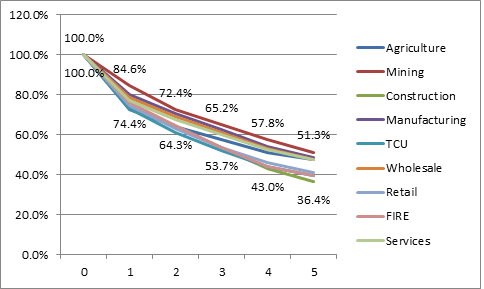
Hat tip to Mark Paskell of the Contractor Coaching Partnership blog for digging up a recent article from Small Business Trends reporting on the failure rates of construction businesses after a five year period. The article highlights a statistic that should strike fear into the hearts of credit managers at construction or supply companies across the United States: After a 5 year period, only 36.4% of new construction businesses survive.
That makes the construction industry one of the most volatile. Our readers shouldn’t think of this as much of a secret, as we’ve reported similar statistics in the past, such as this post: High Debt Ratios In Building Supply Industry Means High Risk – Can You Control The Risk?

So, what can you do about this?
The Contractor Coaching Partnership blog article focuses on what businesses must do to survive in the market and prevent itself from falling prey to this statistic. I, however, want to reverse the thought process and focus on what businesses must do to avoid being financially burned by a contracting company that goes belly-up.
When push comes to shove, it’s all about what frontend work your company has done to create loss-saving opportunities in these situations. Just yesterday a client contacted me to advise that a good customer was filing for bankruptcy. The customer owed them nearly $100k. These situations repeat themselves day-in and day-out across the country in the construction industry, and when push comes to shove, it’s all about what frontend work your company has done to create loss-saving opportunities in these situations.
What can you do if your customer files for bankruptcy protections? If you didn’t preserve your mechanics lien rights you’ll be left fighting for scraps with other creditors in an expensive bankruptcy proceeding. Those with protected lien rights, however, will simply bypass the bankruptcy process and collect from property owners, bonds, property equity and more. It’s a no-brainer. Mechanic liens save the day in the face of a bankrupt client.
